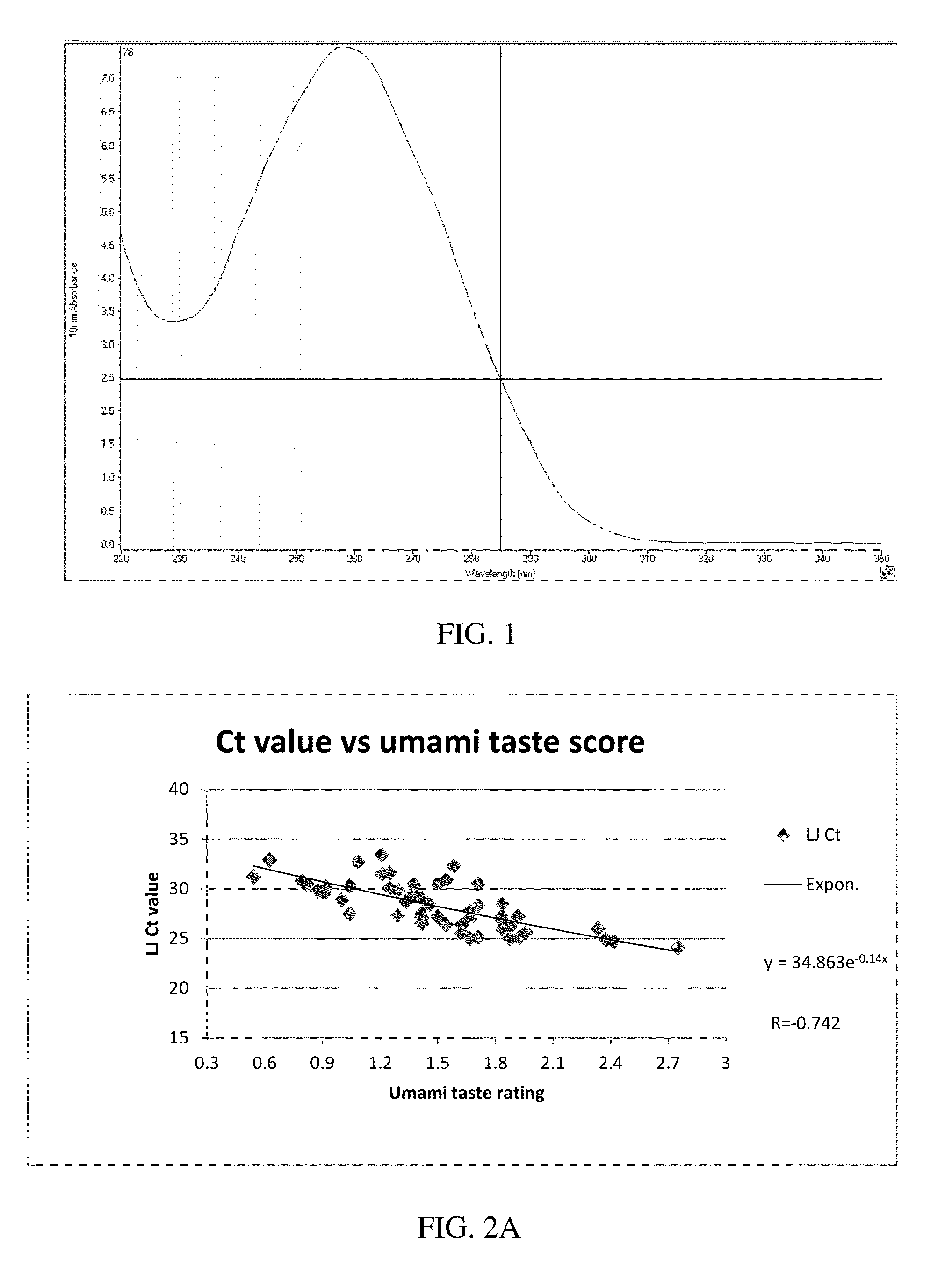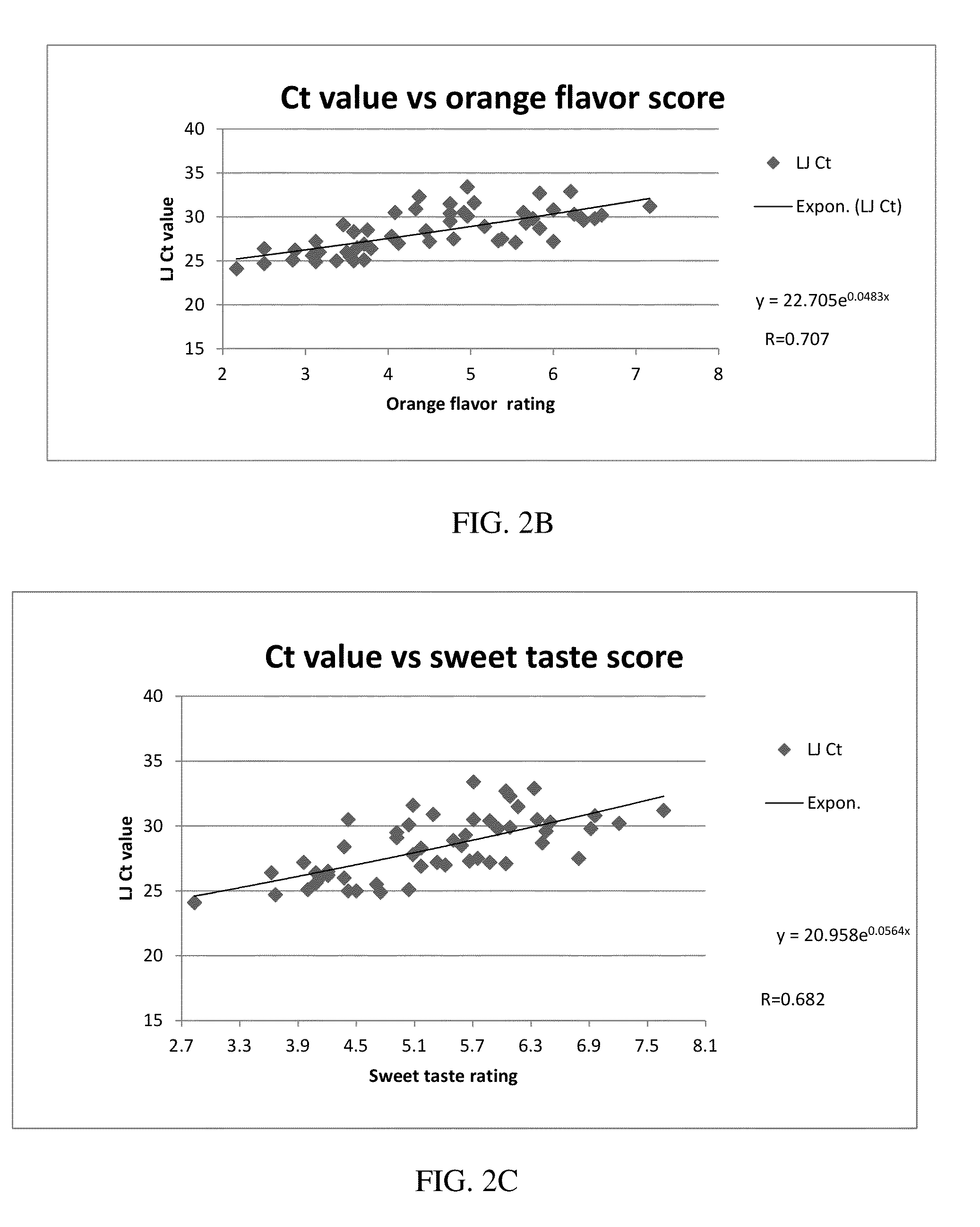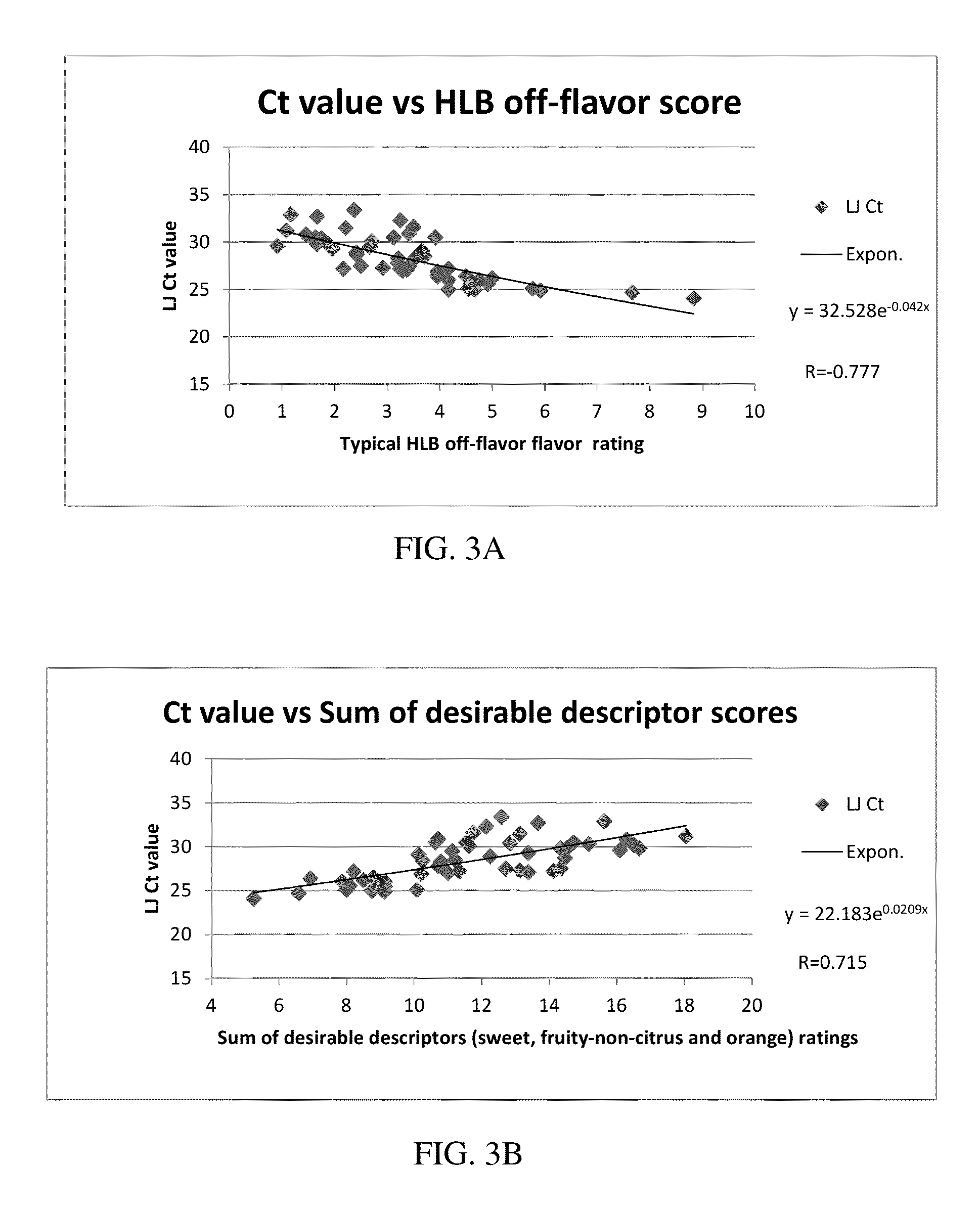Method for assessing juice/cider quality and/or safety
a juice/cider quality and safety technology, applied in the field of methods for assessing juice/cider quality and/or safety, can solve the problems of high concentration of interfering polysaccharides, pectin, and high concentration of sugar-containing polysaccharides
- Summary
- Abstract
- Description
- Claims
- Application Information
AI Technical Summary
Benefits of technology
Problems solved by technology
Method used
Image
Examples
example 1
DNA Isolation from Juice
[0081]It is useful to make a stock solution of the extraction buffer. One liter of the extraction buffer contains approximately 12.1 g Tris-base (final concentration: approximately 100 mM), approximately 18.61 g EDTA (final concentration: approximately 50 mM), approximately 29.22 g NaCl (final concentration: approximately 500 mM), approximately 25 g polyvinylpyrrolidone (PVP40) (final concentration: approximately 2.5%), add approximately 800 mL water to dissolve the components. The pH of the extraction buffer is adjusted, if necessary, by adding sufficient 1 M HCl or 1 M NaOH to bring the pH to approximately 8.0. One should add sufficient water to bring the total volume to one liter. Next, one adds approximately 2 μL of β-mercaptoethanol per ml of extraction buffer (the final β-mercaptoethanol concentration is approximately 0.2% (v / v)) to the extraction buffer immediately prior to using the extraction buffer. The salt concentration after one adds CTAB (infra)...
example 2
CLas DNA Detection
[0087]To detect CLas DNA in orange juice obtained from two major orange varieties (Hamlin and Valencia), DNA from the orange juice is isolated and purified using the protocol described in Example 1. Hamlin oranges are obtained from three different healthy trees (one tree received no foliar nutritional spray treatment (U); one tree received a wettable powder nutritional treatment (“WP”); and one tree received a nutritional treatment K (“K”)) and five different trees exhibiting HLB disease (one infected tree receiving no foliar nutritional spray treatment (“U”); one infected tree that received the wettable powder nutritional treatment (“WP”); one infected tree that received the nutritional treatment K (“K”); mildly (as defined below in Table 5) infected tree that received the nutritional treatment K (“K”); and severely (as defined in Table 5 below) infected tree that received the nutritional treatment K (“K”)).
[0088]Valencia oranges are obtained from three different ...
example 3
Detection of CLas DNA in Commercial Orange Juice
[0096]Five brands of juice are purchased at a local store: Orange juice 1, Orange juice 2, Orange juice 3, Orange juice 4, and Orange juice 5. DNA isolation and purification is performed as described in Example 1 for each brand of juice. Next, qPCR is performed as described in Example 2 supra on each isolated and purified DNA obtained from each juice brand using Li primers and LJ primers. Ct value is determined for each sample, in triplicate. The results are in Table 6.
TABLE 6JuiceLi primersLJ primerBrand(16S rDNA) CT(hyv1) CTOrange juice 130.630.2Orange juice 130.630.8Orange juice 130.831.0Orange juice 231.630.0Orange juice 231.930.1Orange juice 231.630.3Orange juice 331.628.5Orange juice 332.229.2Orange juice 331.828.7Orange juice 430.926.9Orange juice 430.627.0Orange juice 430.826.7Orange juice 532.130.9Orange juice 532.930.4Orange juice 532.031.1
[0097]Ct is cycle value using two primers. As discussed supra, any Ct value under 35 us...
PUM
| Property | Measurement | Unit |
|---|---|---|
| total volume | aaaaa | aaaaa |
| pH | aaaaa | aaaaa |
| temperature | aaaaa | aaaaa |
Abstract
Description
Claims
Application Information
 Login to View More
Login to View More - R&D
- Intellectual Property
- Life Sciences
- Materials
- Tech Scout
- Unparalleled Data Quality
- Higher Quality Content
- 60% Fewer Hallucinations
Browse by: Latest US Patents, China's latest patents, Technical Efficacy Thesaurus, Application Domain, Technology Topic, Popular Technical Reports.
© 2025 PatSnap. All rights reserved.Legal|Privacy policy|Modern Slavery Act Transparency Statement|Sitemap|About US| Contact US: help@patsnap.com



